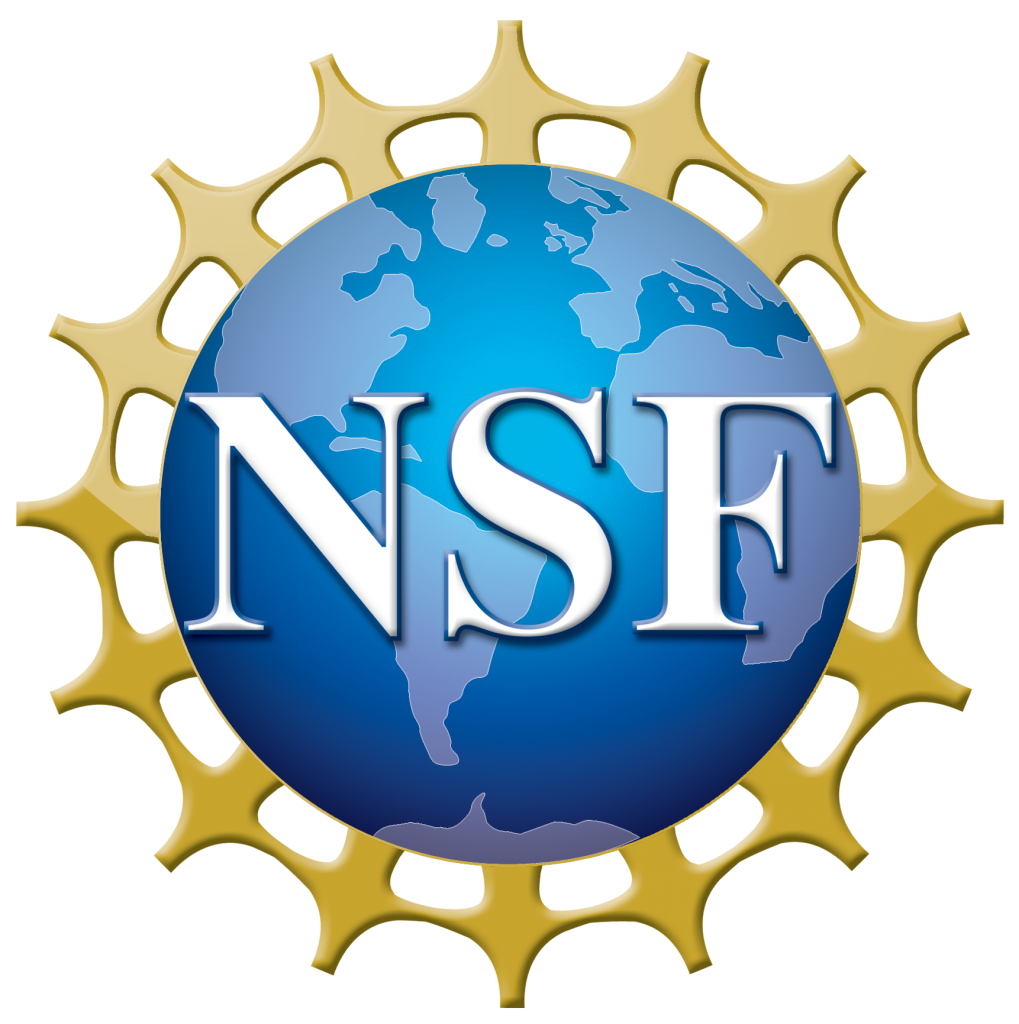Our research focuses on advancing high-power, reconfigurable RF, microwave, and mm-wave systems using innovative approaches, including plasma tuning. Key topics include EM-plasma interaction, high-power tunable antennas, frequency-selective surfaces, plasma metamaterials, electrically small antennas, matching networks, and efficient plasma generators.
High-Power EM Tuning, Control, and Radiation
Supported by ONR and ARL
Traditional RF tuning methods, such as semiconductor devices, MEMS, liquid crystals, and ferromagnetic materials, face limitations in tuning range and power handling. Plasmas, however, enable wide tunability of dielectric permittivity and conductivity through electron density control, with additional tuning via plasma sheath thickness. Our lab focuses on developing precise techniques to harness these properties for high-frequency, high-power applications.
S. N. Ramesh and A. Semnani, “A plasma-loaded resonator for integrated filter-limiter applications,” IEEE TMTT, 2024.
S. N. Ramesh and A. Semnani, “Theory and design of frequency-selective absorptive microwave plasma limiters,” IEEE TMTT, 2024.
S. N. Ramesh and A. Semnani, “A comprehensive circuit modeling approach for self-sustained capacitively-coupled microwave plasmas,” IEEE TPS, 2021.
A. Semnani, S. Macheret, and D. Peroulis, “A quasi-absorptive microwave resonant plasma switch for high-power applications,” IEEE TMTT, 2018.
A. Semnani, S. Macheret, and D. Peroulis, “A high-power widely-tunable limiter utilizing an evanescent-mode cavity resonator loaded with a gas discharge tube,” IEEE TPS, 2016.
Supported by ONR and ARL
Semiconductor devices, microelectromechanical systems (MEMS), liquid crystals, and ferromagnetic materials have been conventionally employed as RF tuning elements. However, these technologies suffer from two main issues of limited tuning range and low power handling. In plasmas, both dielectric permittivity and conductivity can be widely tuned by controlling the electron density. Furthermore, varying plasma sheath thickness leads to another tuning scheme. This effort aims to investigate techniques to precisely control the electromagnetic properties of plasmas to attain high-frequency tuning for high-power scenarios.
S. N. Ramesh and A. Semnani, “A comprehensive circuit modeling approach for self-sustained capacitively-coupled microwave plasmas,” IEEE TPS, 2021.
A. Semnani, S. Macheret, and D. Peroulis, “A quasi-absorptive microwave resonant plasma switch for high-power applications,” IEEE TMTT, 2018.
A. Semnani, S. Macheret, and D. Peroulis, “A high-power widely-tunable limiter utilizing an evanescent-mode cavity resonator loaded with a gas discharge tube,” IEEE TPS, 2016.
Energy-Efficient Microwave Plasmas
Supported by NSF and DOE
Cold plasma is a transformative technology with applications in medicine, food preservation, water treatment, electronics, lighting, propulsion, compact accelerators, and microfabrication. At the Adaptive Radiofrequency and Plasma Lab (ARPL), we address the challenge of bulky, energy-intensive plasma generators by developing efficient, low-power plasmas using resonant microwave structures. Our approach enables plasma generation with accessible energy sources like cell phones, solar cells, or batteries, making plasma solutions portable, affordable, and widely accessible.
K. S. Kabir and A. Semnani, “A frequency-tunable plasma jet utilizing an SIW evanescent-mode cavity resonator,” IEEE TMTT, 2025.
M. R. Akram and A. Semnani, “Non-radiating resonances: anapoles enabling highly-efficient plasma jets within dielectric structures,” IEEE TMTT, 2024.
A. Semnani and K. S. Kabir, “A highly-efficient microwave plasma jet based on evanescent-mode cavity-resonator technology,” IEEE TPS, 2022.
Z. Vander Missen, A. Semnani, and D. Peroulis, “Microwave-driven CPW microplasma generator for low-power discharge,” IMWS-AMP, 2018.
Supported by NSF
Cold plasma is a critical technology in many applications such as plasma medicine, food preservation, water treatment, reconfigurable electronics, high-quality lighting, electric propulsion systems, sterilization, and microfabrication. However, generating stable plasma is not a trivial task as bulky, expensive, and energy-hungry units are often required. This research is aimed at developing high efficiency and low power plasmas based on resonant microwave structures. Such plasma can potentially be powered by low-power and readily available supplies, including cell phones, solar cells, or even batteries, making it safe, low cost, portable, and readily available to many end-users.
A. Semnani and K. S. Kabir, “A highly-efficient microwave plasma jet based on evanescent-mode cavity-resonator technology,” IEEE TPS, 2021.
Z. Vander Missen, A. Semnani, and D. Peroulis, “Microwave-driven CPW microplasma generator for low-power discharge,” IMWS-AMP, 2018.
Plasma-Matched Electrically Small Antennas
Supported by ONR and Lockheed Martin
We are developing a plasma-based approach for wideband matching of electrically small antennas. This technique leverages plasmas’ negative permittivity to realize a negative capacitor within a capacitively coupled structure. The negative capacitance compensates for the reactance of small antennas over a wide bandwidth without significant loss, offering an efficient solution for radiation at low frequencies, especially in high-power scenarios.
A. Semnani, K. Singhal, and S. T. Moon, “A plasma-based technique for wideband matching of electrically small antennas,” IEEE International Symposium on Antennas and Propagation and USNC-URSI Radio Science Meeting (USNC-URSI), Portland, OR, 2023.
A. Semnani, K. Singhal, and S. T. Moon, “Impedance matching in small antennas through capacitively-coupled plasma technique,” 76th Annual Gaseous Electronics Conference (GEC), Ann Arbor, MI, 2023.
A. Semnani, K. Singhal, and S. T. Moon, “A plasma matching approach to realize wideband and efficient small antennas,” IEEE International Conference on Plasma Science (ICOPS), Santa Fe, NM, 2023.
V. Podolsky, A. Semnani, and S. O. Macheret, “Experimental and numerical studies of a tunable plasma antenna sustained by RF power,” IEEE TPS, 2020.
A. Semnani, M. D. Sinanis, and D. Peroulis, “An evanescent-mode cavity-backed high-power tunable slot antenna,” IEEE TAP, 2019.
Supported by ONR and NSF
This effort aims to investigate reconfigurable antenna elements and arrays that can handle high power, with tunable frequency, radiation pattern, and gain characteristics. All mechanical, electronic, and plasma tuning are being investigated. Specifically, plasma is the only natural material that can represent negative permittivity and so negative capacitance. Therefore, a negative plasma capacitor can compensate for the negative reactance of electrically-small antennas over a wide bandwidth. Plasma augmentation can significantly increase the bndwidth×efficiency of small antennas, and thus, this technique can be a viable solution for efficient radiation with tuning capability.
V. Podolsky, A. Semnani, and S. O. Macheret, “Experimental and numerical studies of a tunable plasma antenna sustained by RF power,” IEEE TPS, 2020.
A. Semnani, M. D. Sinanis, and D. Peroulis, “An evanescent-mode cavity-backed high-power tunable slot antenna,” IEEE TAP, 2019.
Tunable Impedance Matching Networks
Supported by ONR and NSWC Crane
This research aims to enhance the understanding and capabilities of plasma impedance matching networks to increase the tunable wideband capabilities of RF systems. The goal is to investigate the plasma’s negative permittivity characteristics and their controllability and tunability to interface with other RF components. Additionally, the research examines the correlation between size and performance through analysis, simulation, and experimentation to miniaturize these components. The evaluation of this concept will be based on the level of power, frequency bandwidth, and achievable efficiency of the matching network.
Z. Vander Missen, S. O. Macheret, A. Semnani, and D. Peroulis, “Plasma switch-based technology for high-speed and high-power impedance tuning,” IEEE WAMICON, 2021.
A. Semnani, G. S. Shaffer, Y.-C. Wu, and D. Peroulis, “High-power impedance tuner utilizing substrate-integrated evanescent-mode cavity technology and external linear actuators,” IET MAP, 2019.
A. Semnani, M. A. Khater, Y. C. Wu, and D. Peroulis, “An electronically-tunable high-power impedance tuner with integrated closed-loop control,” IEEE MWCL, 2017.
Supported by Lockheed Martin, ONR, and NSWC Crane
This effort is to mature and advance the understanding of the capabilities of plasma impedance matching networks as it relates to increasing the tunable wideband capabilities of an RF system. It is desired to understand the plasma negative permittivity characteristics and their ability to be controlled, tuned, and interfaced with other components in an RF system. It is also desired to understand the miniaturization of these components and the correlation between size and performance through analysis, simulation, and experimentation. The concept will be evaluated by the level of power, the frequency bandwidth, and the achievable efficiency of the matching network.
Z. Vander Missen, S. O. Macheret, A. Semnani, and D. Peroulis, “Plasma switch-based technology for high-speed and high-power impedance tuning,” IEEE WAMICON, 2021.
A. Semnani, G. S. Shaffer, Y.-C. Wu, and D. Peroulis, “High-power impedance tuner utilizing substrate-integrated evanescent-mode cavity technology and external linear actuators,” IET MAP, 2019.
A. Semnani, M. A. Khater, Y. C. Wu, and D. Peroulis, “An electronically-tunable high-power impedance tuner with integrated closed-loop control,” IEEE MWCL, 2017.






